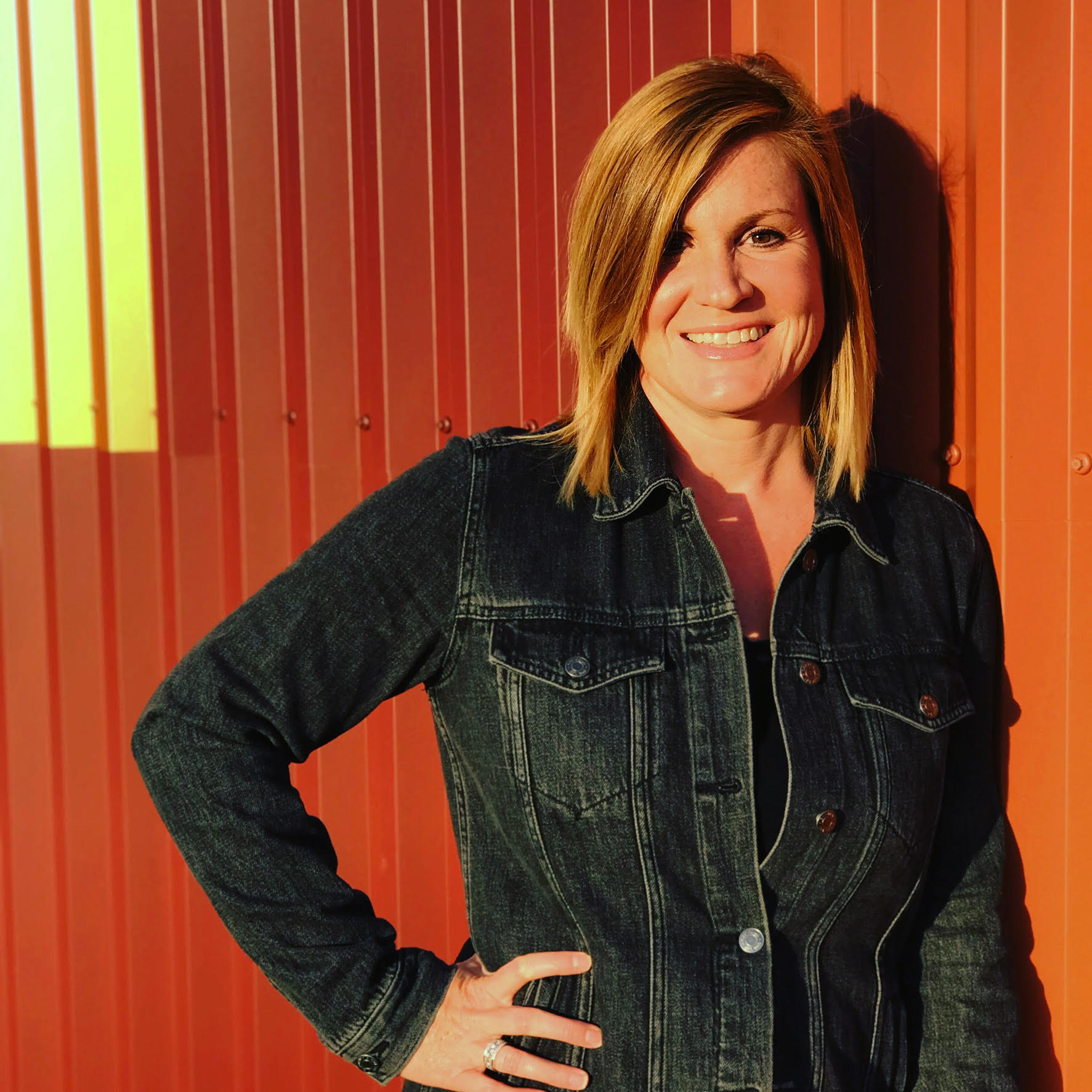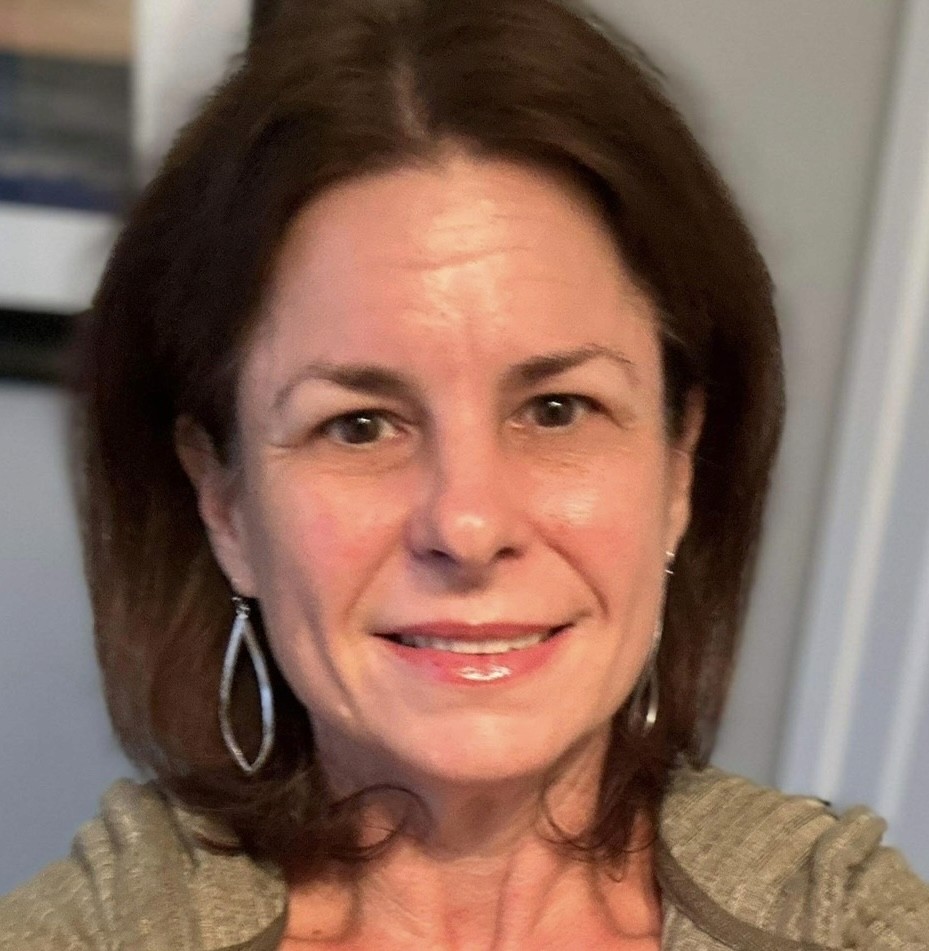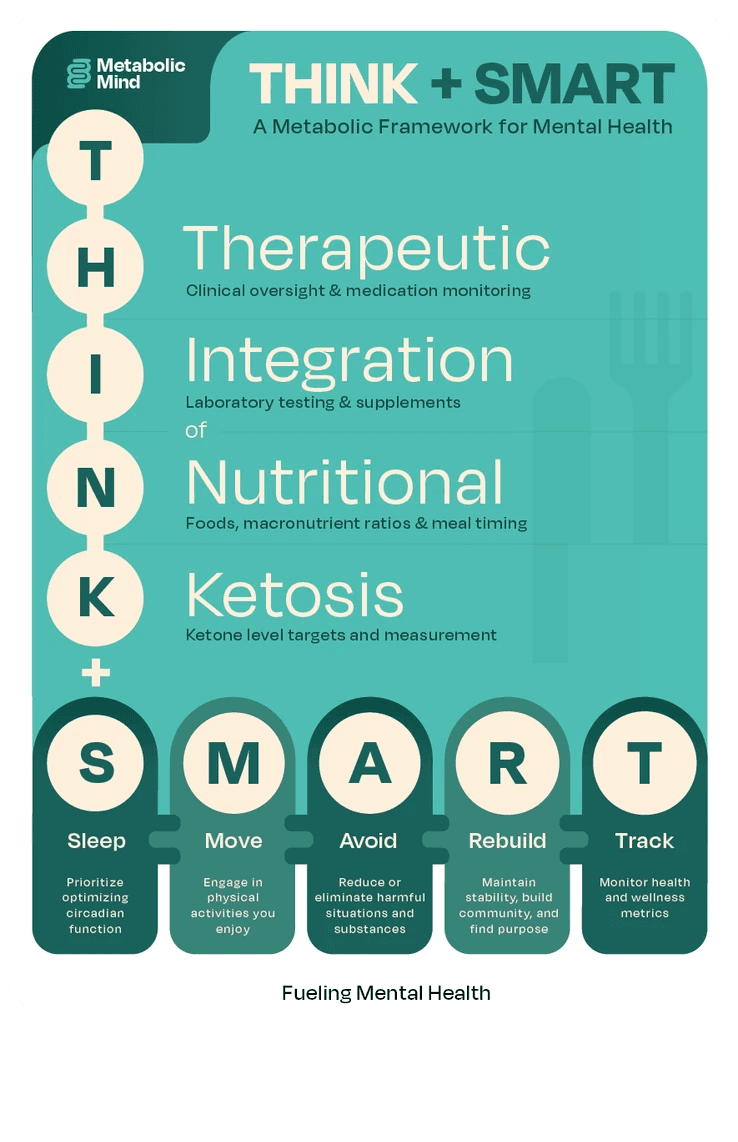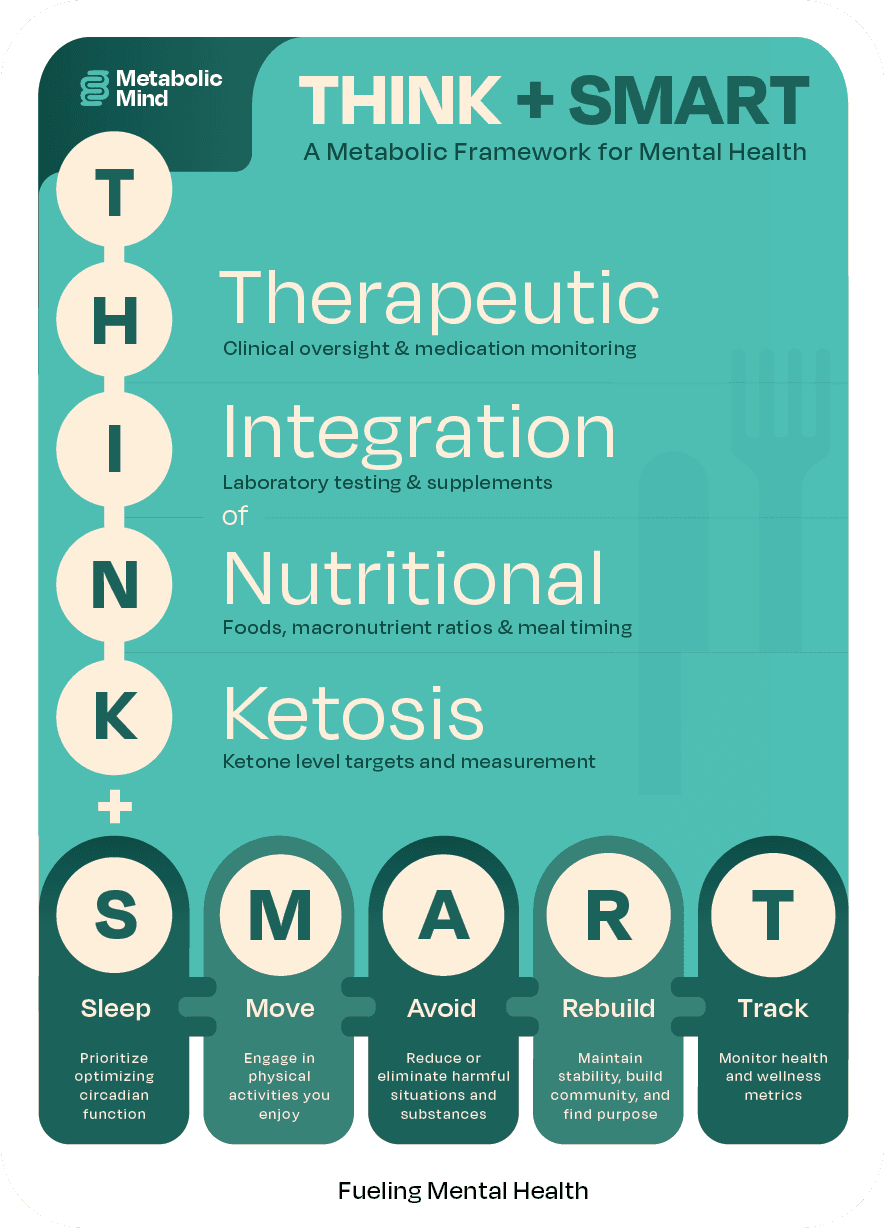New Research - Keto Trial Promises New Treatment Option in Bipolar Disorder
My THINK + SMART Profile
Key Symptoms Addressed
Anxiety, irritability, hyper-sensitivity, and severe depressive symptoms.
My Top Three Strategies
Mostly animal-based, low carb diet with regular blood testing (glucose + ketones 3x daily).
Daily intermittent fasting (16-18 hours) with a once-weekly extended fast (36 hours).
Careful monitoring of sleep quantity and quality with strict adherence to a sleep hygiene routine.
T
H
Therapeutic
I currently see a therapist (licensed social worker) and a prescriber (nurse practitioner). Though both support my use of therapeutic ketosis as a part of my treatment, neither are well versed in its application. I was put on olanzapine back in September 2023 as a result of a manic episode. Before that I had been off of all medications since spring of 2020 (as a result of the pandemic and lockdowns). It is likely that cannabis and possibly heavy nicotine use contributed to the manic episode. My prescriber and I now work together closely to monitor symptoms that tend to precede a manic episode and use the olanzapine as needed. Since the olanzapine has such metabolically damaging side effects, my prescriber and I are currently working to decrease the need for the drug by focusing heavily on sleep management, nicotine cessation and decreasing cannabis use.
I
Integration
Since I discovered this treatment by accident, I didn’t have any lab work done beforehand. Currently, I monitor my blood ketone and glucose levels three times daily to gain a clearer picture of my metabolic state and to adjust my diet and routine as needed. I also test my vitamin D levels every 4–6 months. While I’ve had other lab work done—such as a CBC and lipid panel—I haven’t yet found a provider willing to follow up without becoming uncomfortably insistent on prescribing a statin, which I strongly prefer to avoid.
Over the past couple of years, I’ve incorporated magnesium L-threonate, vitamin D, vitamin K, and Lugol’s iodine to my daily routine. More recently, I added a B-complex supplement with coenzyme CoQ10, as I’ve consistently found B vitamins helpful—even before I discovered therapeutic ketosis. Before switching to my current B-complex, I regularly used nutritional yeast to support my B vitamin intake. Though not technically a supplement, I also eat a can of sardines daily to boost my intake of omega-3 fats.
N
Nutritional
When it comes to my diet, I can best summarize the guiding principles I follow by paraphrasing Dr. Annette Bosworth: Ketosis is a metabolic state, not a diet. Early in my ketogenic journey, I purchased both a ketone meter and a blood sugar monitor and made regular testing a habit. My diet varies depending on several factors, but generally, I follow a mostly animal-based approach with fewer than 40 grams of total carbohydrates per day to stay in nutritional ketosis (above 0.5 mmol/L).
When my symptoms become noticeable, I’m under a lot of stress, I’m using olanzapine more frequently, or my nicotine consumption increases, I adjust accordingly. In these cases, I reduce my carbohydrate intake to below 20 grams and incorporate additional fasting to elevate my ketones into a more therapeutic range (1.0–4.0 mmol/L).
I regularly practice intermittent fasting, typically beginning my fast in the afternoon and going without food for 16–18 hours. Recently, I’ve added a once-weekly extended fast, going 36–40 hours between Saturday afternoon and Monday morning. Since starting this protocol in February, I’ve noticed a significant and sustained increase in my ketone levels.
K
Ketosis
I regularly test both my ketone and glucose levels. I generally aim to stay in nutritional ketosis, with ketones measuring above 0.5 mmol/L. Recently, I’ve been achieving higher ketone levels by incorporating more fasting and reducing my intake of metabolically damaging substances. I’ll be monitoring how these changes affect my symptoms and overall well-being in the coming months.
It’s worth noting that I have intentionally experimented with going off a ketogenic diet since October 2022, and I’ve also fallen off track on a few occasions. Both experiences reinforced my belief that this therapy is effective and offers significant benefits for my health.
S
Sleep
I didn't realize how vitally important sleep was until I had a manic episode in September 2023, which landed me in the hospital. Since then, sleep has become a top priority. Although getting morning sunlight is challenging, I make sure to follow a relaxing evening routine with a regular bedtime. Recently, I've also started wearing blue-light blocking glasses around sunset to help improve my sleep quality. Additionally, I track my sleep time and quality using a Fitbit fitness tracker to monitor my progress.
M
Move
Since October of 2022, my physical activity has waned and waxed. I generally try to get at least 7500 steps in per day. There are times when I'm doing far more and times when I'm doing far less. Back in September of 2024 I started consistently strength training with weights 3-4 days per week, however, I took a break in January which wound up extending into all of February as well. I'm currently back at training with weights and have also started a regular yoga practice which has become a daily habit since February.
A
Avoid
The main reason I tried a no-carb diet was to assist in a dopamine detox aimed at helping me quit smoking cigarettes and cannabis. Surprisingly, stumbling into ketosis resulted in unexpected benefits for my bipolar symptoms, but my struggles with addiction have required additional effort.
While I’ve had periods of weeks, even months, where I was able to quit both cannabis and cigarettes, I have not been able to fully avoid either. I’m currently approaching 50 days cigarette-free and gradually reducing my nicotine replacement therapy (NRT) dose. I’m also doing my best to limit my cannabis consumption.
R
Rebuild
Although meditation has been a technique I’ve practiced on and off throughout my adult life, I’ve been actively working to make morning and evening practice a consistent daily habit for the past couple of months. To help address isolation, I’ve also started joining online groups, which has been a helpful step toward building more meaningful connections. Additionally, I’ve launched a website and am exploring opportunities for freelance writing in the hopes of building a meaningful, fulfilling career.
T
Track
I rely heavily on technology to help me track the various metrics I use to monitor my health and progress. As mentioned earlier, my Fitbit device is excellent for tracking both the quality and quantity of my sleep. It’s also helpful for tracking activity, step count, menstrual health, and other data that are relevant as I navigate my wellness journey.
For tracking carbohydrates, I’ve been a fan of Cronometer since 2023, using it daily to monitor and analyze my diet. When it comes to tracking everything together, since 2024, I’ve been using a self-created spreadsheet in Google Sheets to log most of my progress. While apps can be useful, I’ve never found anything that offers as much personalization as my own tracking spreadsheets. I can tailor them to fit my current needs: if I’m struggling to manage my illness, I may scale back the metrics I track, focusing just on essential factors like diet and sleep. When I’m doing better, I create a more intricate tracking routine, setting up data to track and tasks to accomplish. This helps me stay on top of my progress and build a sense of mastery as I progressively accomplish more.
More THINK + SMART Profiles

Emily Anne Herrick
In remission from
Depression
Started Journey
2022
View Profile and Videos

Matt Baszucki
Recovered from
Bipolar 1
Started Journey
2021
View Profile and Videos

Lauren Kennedy West
In remission from
Schizoaffective Disorder
Started Journey
2023
View Profile and Videos


Caroline Beckwith
In remission from
Anorexia Nervosa
Started Journey
2019
View Profile and Videos

Wesley Braden
Managing
Bipolar 2
Started Journey
2023
View Profile and Videos


Neseret Bemient
In remission from
Antidepressant Induced Bipolar 2
Started Journey
2021
View Profile and Videos

Eric Rodgers
In remission from
Depression
Started Journey
2016
View Profile and Videos


Mia Mendez
In remission from
Bipolar Disorder
Started Journey
2018
View Profile and Videos


Robyn Dobbins
In remission from
Bipolar, Depression, OCD
Started Journey
2017
View Profile and Videos

Harmony Bright
Recovering from
Schizophrenia
Started Journey
2023
View Profile and Videos

Steven T.
Recovering from
Bipolar 2 Mixed, Substance Abuse
Started Journey
2021
View Profile and Videos


Donika Hristova
Recovered from
Bipolar Type 2, Binge Eating Disorder
Started Journey
2021
View Profile and Videos

Lori Graham
Recovering from
Major Depression & Generalized Anxiety
Started Journey
2024
View Profile

Tanner Lawlis
In remission from
Obsessive-Compulsive Disorder (OCD)
Started Journey
2023
View Profile and Videos


Dyane Harwood
Thriving with
Bipolar 1
Started Journey
2022
View Profile and Videos

Henk van Wijk
In remission from
PTSD
Started Journey
2021
View Profile

Lily Zhang
In remission from
Depression
Started Journey
2024
View Profile and Videos

Lori
Treating
Bipolar, ADHD & Binge Eating Disorder
Started Journey
2024
View Profile

Kelsey S
Managing
Depression, OCD, Trichotillomania, & PTSD
Started Journey
2022
View Profile

Lewis Anstee
Recovered from
Paranoid Schizophrenia
Started Journey
2024
View Profile


Shannon Harwood
Recovered from
Bipolar 2
Started Journey
2021
View Profile and Videos

Lexa Martinez de la Cueva
In remission from
Schizoaffective Disorder
Started Journey
2023
View Profile and Videos


Oliver Seligman
Managing
Bipolar 1
Started Journey
2022
View Profile and Videos

Elisabeth Sloetjes
Recovered from
Bipolar 2 with Rapid Cycling
Started Journey
2023
View Profile

J.P. Weedon
Recovering from
Bipolar Disorder
Started Journey
2022
View Profile

Michelle Hurn
In remission from
Anorexia, Depression & Anxiety
Started Journey
2019
View Profile

Valerie Anne Smith
In remission from
Schizophrenia, OCD & Anorexia
Started Journey
2017
View Profile

Moira Newiss
Treating
Depression & Anxiety
Started Journey
2019
View Profile

Brianna Mitchell
Recovering from
Pre Menstrual Dysphoric Disorder
Started Journey
2024
View Profile

Natasha Smikles
Managing
ADHD & Anxiety
Started Journey
2024
View Profile and Videos

Mimi Morgan
Recovered from
Parkinsonism & Cognitive Slowing
Started Journey
2021
View Profile

Michael Belanger
Managing
Autism
Started Journey
2022
View Profile

Vanessa
Recovering from
Bipolar Disorder & Minor Depression
Started Journey
2024
View Profile

Share Your Strategies
Thriving with
the Community
Begin Your Journey
When you are ready, submit your email so we can deliver the THINK+SMART worksheet to your inbox, along with instructions and periodic updates.


Improve Your Mental Health
Start Your Journey
